Sep 29, 2019 | cents, coins, commemorative, news
While reading the news from around the world, it is easy to understand why numismatics is not well received in the United States. Compared to numismatic-related articles from countries like the United Kingdom, France, and India, U.S. reporting lives down to the reputation that politicians claim.
For example, in The Trentonian, the newspaper of record for Trenton, New Jersey, columnist L.A. Parker wrote an opinion piece that calls for the elimination of the “penny.” Although the article reads like Parker was trying to add a little snarkiness, his premise lies flatter than a coin.
If Parker were a proper journalist, he would recognize that the article contains one significant mistake that ranks high on my pet peeve list. The lowest denomination coin produced by the U.S. Mint is the CENT. While it is colloquially called a “penny,” the penny as the lowest denomination of the British coin system.
The difference is clear. If one looks at the reverse of the two coins, each has their denominations spelled out.
-
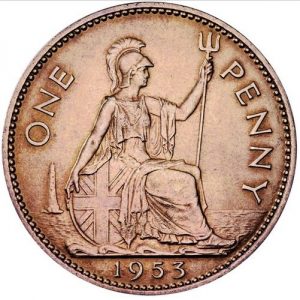
-
British pre-decimalization Penny
-
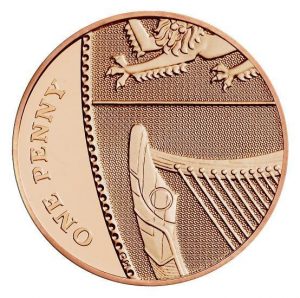
-
The reverse of a 2018 U.K. One Penny coin
-
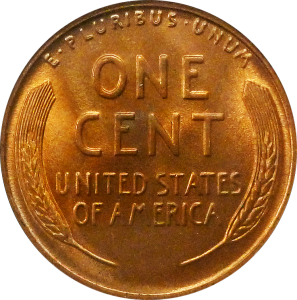
-
Lincoln Cent Wheat Ears reverse
-
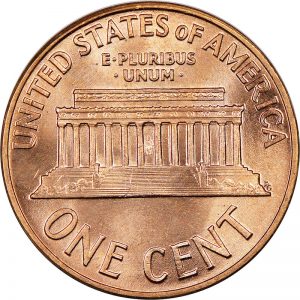
-
Lincoln Memorial Cent
-
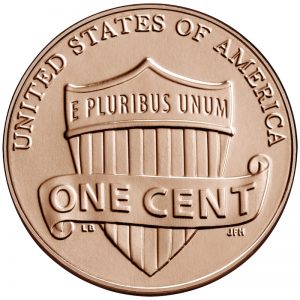
-
Modern Lincoln Shield Cent
Lately, the U.S. Mint has been adding to the confusion by using the word “penny” instead of “cent.” The significant abuser appears to be U.S. Mint Director David Ryder. While previous directors and acting directors have been careful with the name, it seems to have loosened its language since the appointment of Ryder. Ryder should know better since this is not his first appointment to the U.S. Mint.
Adding to the confusion in Parker’s article, he cites statistics in favor of the cent that was compiled by Americans for Common Cents. Americans for Common Cents is a lobbying organization dedicated to preserving the United States’ lowest denomination coin.
According to Parker, “Pennies no longer matter.” If the one-cent coin no longer matters, then why does the U.S. Mint produce over 13 billion of them each year?
The primary client of the U.S. Mint is the Federal Reserve. Every year, the Federal Reserve places an order for the U.S. Mint to produce coins for circulation. Although the order can be updated during the year, the Federal Reserve rarely requests few coins. It means that the U.S. Mint manufactures coin the Federal Reserve will buy.
The U.S. Mint does produce coins for the collector market. But in comparison to their circulating coin production, the numismatic market is tiny.
Naturally, this leads to wondering if the coins no longer matter, then why is the Federal Reserve asking the U.S. Mint to manufacture and deliver over 13 billion coins?
And now the news…

September 22, 2019
Two women have designed a commemorative coin to recognize 100 years since the Boll Weevil monument was erected. Enterprise high school Quarterbacks club secretary Judi Stinnett got the design idea from a coin she received at the Diamond Jubilee over 60 years ago. 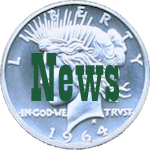 → Read more at wtvy.com
→ Read more at wtvy.com

September 22, 2019
The South African Mint Company are doing something a little different to celebrate 25 years of democracy in this country. So what better way to commemorate “power to the people” than by handing them control of what should appear on the new R2 coin?  → Read more at thesouthafrican.com
→ Read more at thesouthafrican.com

September 23, 2019
Nassau County District Attorney Madeline Singas announced that a coin dealer from Fort Salonga was arraigned for a $330,000 cross-country coin consignment and sale scheme that targeted coin dealers and private collectors from California, Michigan, Ohio and Long Island.  → Read more at longisland.com
→ Read more at longisland.com

September 24, 2019
A builder is celebrating after finding a huge haul of 1,000-year-old silver coins worth £50,000 – including one from Lincolnshire which experts have never seen before. Don Crawley, 50, was searching for buried treasure in farmland using his metal detector when he discovered the haul.  → Read more at lincolnshirelive.co.uk
→ Read more at lincolnshirelive.co.uk

September 24, 2019
(Image: © FIRST/Jack Kamen/NASA via collectSPACE.com) The United States Mint will memorialize the first teacher who launched toward space with a new coin that will help continue her mission of science and technology education.  → Read more at space.com
→ Read more at space.com

September 25, 2019
Have only seven red cents to my name and soon a self-description will employ penniless as identification. Not ready for the poorhouse though as poor mouth expressions mean only that all pennies have been removed from jars, drawers and a car console.  → Read more at trentonian.com
→ Read more at trentonian.com

September 26, 2019
AN EXTREMELY rare copper coin marking King Edward VIII's short reign has sold for a record price of £133,000. The Edward VIII 1937 Pattern Penny was created as a trial coin by the Royal Mint ahead of his coronation in the same year.  → Read more at thesun.co.uk
→ Read more at thesun.co.uk

September 26, 2019
Lori Ann Lewis was doing charity work in downtown Orlando when, by chance, she ran into someone who worked in the gold business. It was in the lobby of the Seacoast Bank skyscraper in 2016, just before the presidential election, when she met Susan Kitzmiller, an employee at U.S.  → Read more at orlandosentinel.com
→ Read more at orlandosentinel.com

September 28, 2019
The Bank of Jamaica (BOJ) estimates that at least J$100 million in one- 10- and 25-cent coins, the ‘red’ money, is ‘lost in circulation’ in the Jamaican economy, and has partnered with GraceKennedy (GK) Money Service in a recovery drive.  → Read more at jamaica-gleaner.com
→ Read more at jamaica-gleaner.com
Sep 25, 2019 | Canada, cash, coins, commentary
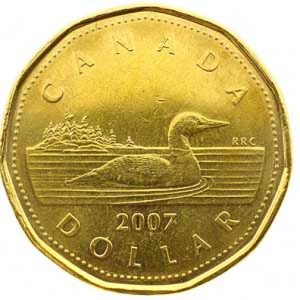 The Canadian Broadcast Company reported that a bank in Montreal refused the deposit of $800 in rolled coins.
The Canadian Broadcast Company reported that a bank in Montreal refused the deposit of $800 in rolled coins.
Julien Perrotte saves the coins he receives in change. Every year he will sort and roll the coins so that he can deposit them into his account at Laurentian Bank. This year, the bank told Perrotte that it was a new policy not to accept coins.
Canadian laws do not require banks to accept all legal tender coins or currencies. They can refuse to take any form of specie and only operate using electronic funds.
Laurentian Bank has taken advantage of these laws and no longer employ human tellers to accept cash. Customers can deposit currency and checks in their automated banking machines. The machines do not accept coins.
Before people begin to criticize Laurentian, this is starting to occur in the United States. Banks and other financial institutions are beginning to offer checking and other consumer banking services accessible online. They do not have branch offices.
The largest and most successful of the online banks is Ally. Anyone can open an Ally account and have access to the full line of banking services except you cannot deposit cash.
Then there are banks with physical presences that are transitioning to a model like Laurentian. Capital One Bank entered the consumer banking business when it started buying smaller banks in 2005. Today, Capital One is closing branches and consolidating teller operations in Capital One Cafes. Customers that do not live near Capital One Cafes can deposit currency and checks via an ATM but cannot deposit coins.
Does this mean we are heading toward a cashless society?
No! It means that the United States has an economy diverse enough to support new ideas in banking services while maintaining traditional banking operation. It is because the United States has a diverse economy that includes a cash-based transaction (see here and here) that will prevent our society from going cashless.
Rather than try to deal with Laurentian Bank’s new policy, Perrotte said he will be taking his business elsewhere.
Sep 24, 2019 | books, review
During the unpacking of an estate, I came across a book with the title Coin of the Canonical Realm. It is a short, 58 pages, paperback book that has an intriguing cover. As a coin collector, I started to thumb through the book to get a sense of its purpose. Since it was not apparent, I had to wait until later.
After cleaning off my desk, I found the book and decided to read the Introduction to understand the book’s purpose. According to the introduction, its purpose is to “21st century sense of all the 19th century mentions of money in the Sherlock Holmes stories.”
Sherlock Holmes was a fictional detective created by Arthur Conan Doyle. Doyle created Holmes as a “consulting detective” so that the character can appear in varying environments. Doyle was one of the first authors to create a crime-fighting character that includes all of the tools that we take advantage of today. Someone suggested that Mission: Impossible is a modern extension of the Sherlock Holmes stories.
Most of Doyle’s stories are written from the perspective of John H. Watson, M.D. as Holmes’ biographer. Watson is a friend and part-time roommate who accompanies Holmes on his investigations. Watson can be annoyed with Holmes on some of his actions while being intrigued by his actions.
During his life, Doyle wrote 56 short stories and four novels about Sherlock Holmes. The short stories are compiled in five books which I have read three of them. All of the Sherlock Holmes stories are highly recommended.
The Sherlock Holmes stories endured long after Doyle’s passing in 1930. Aside from the movies and other new media recreations, there are societies dedicated to studying the intricacies of Holmes, the crimes, and other characters Doyle included. One of those organizations is The John H. Watson Society.
The John H. Watson Society, founded in 2013, is described as an organization that will study Dr. Watson as a unique individual and how his character enhances the Doyle classics. Watson, whose background is revealed throughout the stories, is a renown physician with a heroic war record and trust by a community is leery of the medial arts.
The book, written by Nickolas Utechin whose biography describes himself as having a long history with studying Sherlock Holmes, is the first monograph published by the John H. Watson Society.
Starting from Chapter 1, Utechin copies one or two-line passages from Doyle’s writings that reference money then explains them in the context of the 21st-century. He first describes the old British monetary system where there were 240 pence to a pound including the varying minor coins that were in use at the time. (See this post for a description of the old British monetary system)
Each of the chapters covers the five volumes of compiled short stories and then four chapters for each of the novels. Although you can get the gist of what Utechin writes about, it is best to use this booklet as a companion while reading a Sherlock Holmes story.
Having this explanation while reading one of the short stories adds a different perspective to the story. For those who have not read a Sherlock Holmes story, I would recommend that you first read the story without consulting this booklet. On your second reading have this booklet nearby to help you put the story into perspective.
Some may consider Coin of the Canonical Realm a supplemental study guide to Sherlock Holmes. Whatever you want to call it, fans of the stories may find it adds to their enjoyment.
If you are interested in owning a copy of Coin of the Canonical Realm, you can order it directly from The John H. Watson Society.
Sep 22, 2019 | commentary, economy, news
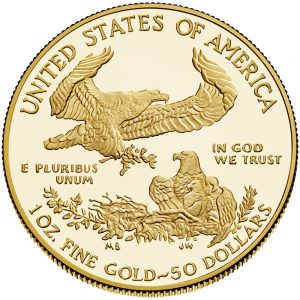 While perusing the news sources looking for numismatic-related news in the general media, I am noticing that there is an increase in crimes involving coin dealers. Between robberies or scams against dealers, the escalation of crime is noticeable and concerning.
While perusing the news sources looking for numismatic-related news in the general media, I am noticing that there is an increase in crimes involving coin dealers. Between robberies or scams against dealers, the escalation of crime is noticeable and concerning.
Any business that handles money is a potential target for criminals. Even with the policies of dropping excess cash into time-locked safes, criminals will rob any store where they can easily take a few dollars.
What makes robberies from coin dealers concerning is that these types of crimes increase when the criminals are looking for a more significant take when their economic situation appears to be getting worse.
Although the markets may be up and the unemployment numbers are low, the indications are that the economy has some soft spots that should be concerning to everyone. The number of people taking contingent and alternative employment arrangement, sometimes called the gig economy, has risen in the last year. The Bureau of Labor Statistics reports that much of the rise in the gig economy is being used to supplement regular income.
In the last month, silver has been a rise of nearly $2 since the beginning of August. Even though silver has dropped to $17.88 from a $19.30 high in September, economic indicators suggest that global affairs will prevent the price from falling. These investors will be affected by a potential oil crisis following the bombing of Saudia Arabian oil fields and the trade war caused by tariffs.
Gold has been relatively flat over the last few months although up for the year. As an investment instrument, gold is favored by large and institutional investors. What is preventing their rise is that on a larger scale, they are not as worried by global affairs. The investments they are involved with are not as affected by a potential oil crisis and a Chinese trade war. Many have isolated themselves from these issues.
The concern is that the split in the economic effect will cause those at the lower ends to try to find some relief by turning to crime. A stolen American Gold Eagle coin has the potential to yield a better return than robbing a convenience store.
As some dealers are pushing the sales of gold, think about what they are saying about the economy.
And now the news…

September 12, 2019
OYSTER BAY, NY — A Fort Salonga coin dealer has been accused in a $330,000 coin consignment and sales scheme in which he bilked several coin dealers and private collectors out of money, gold and collectible coins under the guise of legitimate coin deals, prosecutors said.  → Read more at patch.com
→ Read more at patch.com

September 13, 2019
Photographer: Ted Aljibe/AFP via Getty Images Congestion and constant flooding in the Philippine capital are prompting the central bank to move its mint away from the city. Bangko Sentral ng Pilipinas signed a deal Friday to relocate its production facility for coins and bank notes to New Clark City, a former U.S. air base where the government is building a back-up capital.  → Read more at bloomberg.com
→ Read more at bloomberg.com

September 16, 2019
Julien Perrotte stood in front of the representative at his local bank last week, unsure he properly understood what she was telling him. He was carrying about $800 worth of coins, sorted and rolled, that he had collected over the past year.  → Read more at cbc.ca
→ Read more at cbc.ca

September 17, 2019
September 18, 2019 – Sibenik was the first city in Croatia to mint its own money during the Venetian period. Today, the city has released a new sweet souvenir in its honor. HRTurizam writes that back in 1485, the Venice Council of Nine approved the minting and use of Sibenik's coins – known as the bagatin, which was a means of payment in the city for more than two centuries.  → Read more at total-croatia-news.com
→ Read more at total-croatia-news.com

September 17, 2019
Break-in happened Aug. 30 in Silver Spring Montgomery County police released surveillance video Tuesday of a man stealing what they estimate to be $6,500 in property from a downtown Silver Spring rare-coin store on Aug.  → Read more at bethesdamagazine.com
→ Read more at bethesdamagazine.com

September 17, 2019
More and more people are swapping cash for contactless payments – which means fewer coins are being made. That means the Royal Mint, the company which produces coins for the UK, don't make as many anymore.  → Read more at bbc.co.uk
→ Read more at bbc.co.uk
Sep 16, 2019 | commentary
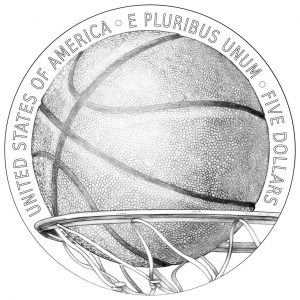 The U.S. Mint unveiled the design of the Basketball Hall of Fame coin at the induction ceremony in Springfield. I found the story on NBA.com, created a post that was later picked up by the rest of the numismatic community.
The U.S. Mint unveiled the design of the Basketball Hall of Fame coin at the induction ceremony in Springfield. I found the story on NBA.com, created a post that was later picked up by the rest of the numismatic community.
A day later, the U.S. Mint issued a press release about the design announcement to the general public.
Over the last year, the information from the U.S. Mint has had problems. Announcements are being issued late. On a recent case, they had to issue corrections. Now, they cannot even include the numismatic community in a collectible that has generated excitement.
The U.S. Mint may be the largest manufacturer of coins, but their communications skills leave much to be desired.
Why is the U.S. Mint not partnering with the numismatic media to get their word out?
Why is the U.S. Mint not issuing general press releases to all news outlets to publicize what they are doing?
Why is the U.S. Mint not publicizing themselves? Aside from being the sole manufacturer of coins in the United States, they are making a profit! Although some decry the amount of seigniorage they earn, it is a profit center for the United States government.
Tell the world!
Tell the world that not only are you producing coins but collectibles. Tell the world that you are producing bullion. Tell the world about the commemorative coins.
Why was the U.S. Mint not out in public in the run-up to the 50th Anniversary of Apollo 11 to highlight the coins? Why was the U.S. Mint not involved in helping celebrate one of the most significant events in United States history?
While the U.S. Mint did participate in National Coin Week, its outreach beyond the collector community leaves much to be desired. The U.S. Mint is doing itself a disservice. They are not helping the numismatic community. And, by extension, not doing right by the country which they are supposed to serve.
Why is this a difficult concept for the U.S. Mint?
It is time for Director David Ryder to either lead the U.S. Mint forward or vacate the job and allow someone who understands modern marketing to raise the bureau’s profile.
And now the news…

September 8, 2019
Nevada Appeal staff report As the 150th anniversary of the opening of the U.S. Branch Mint in Carson City draws closer, the Nevada State Museum is expanding the days it showcases one of the Mint’s most enduring artifacts.  → Read more at nevadaappeal.com
→ Read more at nevadaappeal.com

September 8, 2019
MANAMA, Bahrain — There's a burgeoning online market for the elaborate and colorful coins pressed into the palms of Navy petty officers when they pin on their anchors and take the chief petty officer's pledge, but some critics say the trade diminishes the value of the tradition.  → Read more at military.com
→ Read more at military.com

September 9, 2019
The Australian Security Intelligence Organisation (ASIO) has teamed up with the Royal Australian Mint to release their first ever coin featuring a secret code. The coin was released in commemoration of ASIO’s 70th anniversary this year.  → Read more at businessinsider.com.au
→ Read more at businessinsider.com.au

September 15, 2019
PROVO — The camera rows behind the baseline of a basketball court offer a vantage point of the game unlike anything caught from the nosebleed seats or even on television. It’s there where you can truly absorb the athleticism of the sport and appreciate how the way men and women fight for a loose ball, a ball much smaller than their gargantuan frames, flows elegantly like poetry.  → Read more at ksl.com
→ Read more at ksl.com
Sep 9, 2019 | coin design, coins, commemorative, US Mint
During a ceremony at the Naismith Memorial Basketball Hall of Fame in Springfield, Massachusetts on September 6, the U.S. Mint unveiled the design for the 2020 Hall of Fame commemorative coin.
The obverse of the coin, designed by Artistic Infusion Program artist Pheobe Hemphill, has an image looking down into the net from the rim. Superimposed on above the rim are three players: a man, woman, and wheelchair player, reaching for a ball.
The design is something that represents the Basketball Hall of Fame. As opposed to Halls of Fame from other sports, the Basketball Hall of Fame honors the best basketball players from any arena, not just from the professional leagues.
The reverse of the curved coin, designed by Artistic Infusion Program artist Justin Kunz, the image of a basketball as it is about to drop into the basket. While using the image of a ball is similar to what the U.S. Mint used for the 2014 Baseball Hall of Fame Commemorative Coin, this one is a little different. For this commemorative coin, the ball does not take up the entire side, leaving a distinct rim around the ball. Also, the ball will be on the concave side of the coin.
Line drawings of coin designs do not provide the perspective of the final product, making it difficult to judge. The design unveiled in Springfield appears to have a lot of potentials. Let’s hope that the final product can be just as nice.
Although U.S. Mint Director David Ryder once mentioned something about selective coloring on this coin, there has been no formal announcement from the U.S. Mint.
A video of the ceremony is available on the NBA’s website.
Sep 8, 2019 | coins, news
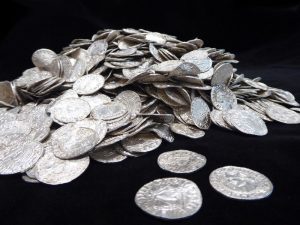
Post Norman Conquest coins found in Sommerset, England (Pippa Pearce/© The Trustees of the British Museum via Smithsonian Magazine)
One of the people I spoke with regularly uses a metal detector around the Eastern Shore of Maryland and into Delaware. Although most of the coins found are from the 20th century, many of the finds include artifacts leftover from earlier settlers. They have found some older copper coins, buttons and bullets from the Civil War, and utensils dating to the colonial period.
The leader of a small group of enthusiasts travels the midwest along know migration trails. Some are now roads and highways, while others have returned to nature. They regularly find artifacts of life on the move. Although they rarely find money, the items they find have made their way into museums and university research centers that study the lives of the western migrants.
Finally, someone who has explored eastern Washington, Idaho, western Montana and Canada discovered artifacts that confirmed and expanded the stories of border disputes in that area. In that era, the disputes were not about security but about who claimed the profit from the resources.
Although metal detector finds in the United States may not find anything more valuable than a few coins, bullets, and buttons, they do find the evidence of history. Unless you stumble over another Saddle Ridge Hoard, finding history can be as gratifying.
And now the news…

August 29, 2019
Shortly after the Battle of Hastings in 1066, a wealthy local buried a trove of 2,528 coins in what is now Somerset, England. Featuring the likenesses of both Harold II—the country’s last crowned Anglo-Saxon king—and his successor, William the Conqueror, the hoard is the largest collection of post-Norman Conquest coins found to date.  → Read more at smithsonianmag.com
→ Read more at smithsonianmag.com

August 30, 2019
Manitoba lottery officials modify their machines to close a loophole exploited by gamblers. 1:32 When was the last time you saw a 50-cent piece?  → Read more at cbc.ca
→ Read more at cbc.ca

September 1, 2019
In mid-September, Macquarie Mint will release 500 Red-Back Spider $1 coins as part of its aptly named 'Deadly & Dangerous' collection. There are six more in the series, ranging from the dingo to the great white shark.  → Read more at lifehacker.com.au
→ Read more at lifehacker.com.au

September 2, 2019
Better known for lagging, sagging, floundering and falling, Canadian currency now boasts a distinction both impressive and unique: It pulsates. Well, one $10 silver collector’s coin appears to do so thanks to a “numismatic breakthrough” that the Royal Canadian Mint heralds as a world-first.  → Read more at resourceclips.com
→ Read more at resourceclips.com

September 2, 2019
OTTAWA , Sept. 3, 2019 /CNW/ – The Royal Canadian Mint is proud to launch a numismatic breakthrough from its ambitious and creative Research and Development team. Working with the University of Ottawa's Centre for Research in Photonics, the R+D team has created the 2020 $10 Fine Silver Coin – Pulsating Maple Leaf, engraved with an array of sub-millimeter-scale mirrors in the shape of a maple leaf on the reverse of this 99.99% pure silver coin.  → Read more at finance.yahoo.com
→ Read more at finance.yahoo.com

September 3, 2019
As the 150th anniversary of the opening of the U.S. Branch Mint in Carson City draws closer, the Nevada State Museum is expanding the days it showcases one of the Mint’s most enduring artifacts. For much of the summer, the museum has been giving history lessons and minting medallions every Friday on Historic Coin Press 1 — the original coin press used when the Mint opened in February 1870.  → Read more at carsonnow.org
→ Read more at carsonnow.org

September 4, 2019
TORONTO, Sept. 4, 2019 /CNW/ – For the first time in three decades, Canada's rarest coin – the 1911 silver dollar – will be on public display in its home country. This weekend, on Sept. 7-8, the 108-year-old silver dollar will be displayed at the National Postage Stamp and Coin Show, to be held at the Hilton Mississauga/Meadowvale.  → Read more at newswire.ca
→ Read more at newswire.ca

September 5, 2019
Rare currency expert Alfredo Cimino has never seen the 1911 silver dollar, but he’s heard of it. Everyone in the business has. Nicknamed the Emperor or Holy Grail of Canadian coins, it’s held many heavyweight titles in the world of numismatics, or professional coin collection and study, including the world’s most valuable coin, in 1965, and Canada’s rarest coin, which it retains to this day.  → Read more at theglobeandmail.com
→ Read more at theglobeandmail.com

September 5, 2019
A rare example of Bermuda “Hogge Money” — a coin which was produced in the early 1600s — sold for $96,000 when it was auctioned last night, with the coin one of only eight examples known to exist. “The Sommer Islands coinage was produced in England circa 1616 for use in the British colony now known as Bermuda,” the auction house noted, with the “Hogge Money” coins issued in four denominations: shilling, sixpence, threepence, and twopence.  → Read more at bernews.com
→ Read more at bernews.com

September 6, 2019
SPRINGFIELD, Mass. — As special as it is for those involved, a class of new members gets enshrined annually in the Naismith Memorial Basketball Hall of Fame. That makes it somewhat less exclusive than the minting of a coin – which is part of this year’s ceremony as well.  → Read more at nba.com
→ Read more at nba.com
Sep 3, 2019 | ANA, coin design, coins, commentary, education, technology, US Mint
Although it has been a while since I have posted something outside of the Weekly World Numismatic News, it does not mean that I have been idle. Here are some random thoughts:
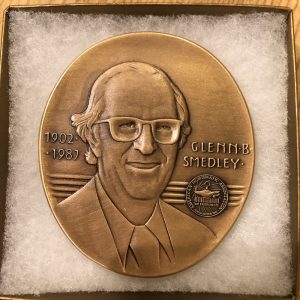
2019 Glenn B Smedley Medal
ANA President Steve Ellsworth asked me to continue as Chair of the Technology Committee. I accepted his appointment. Steve has a different vision for how to move forward. Change is a good thing and will work with him and the Board to do what is best for the ANA.
There continues to be work to do for the ANA to add technology to the numismatic experience. One of the areas I would like to include more technology are the exhibits. After speaking with one person familiar with the exhibiting process, I think there are ways to add technology without technology overshadowing the numismatic content. I will have a proposal shortly. Stay tuned.
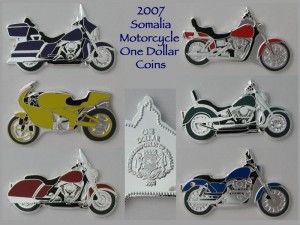
2007 Somalia Motorcycle Coins
I love these coins but is this the direction the U.S. Mint should go?
There are many collectibles whose values have declined over the last year, including some collector coins. One area that remains low are those collector sets produced by the television hucksters or the private mints. These firms overhype the value of their wares to convince buyers that they should purchase them as an investment. Recently, I handled an estate with several items purchased from QVC and the Franklin Mint. All of the coins were overpriced. The family was upset when I provided my valuation. I will talk about this more in a future post.
Another article idea that is inspired by my business is the difference between collecting and investing. Although some people like to try to mix the two, most of the time, the result is that the investor does not create a compelling collection while most of the collectors create value without trying.
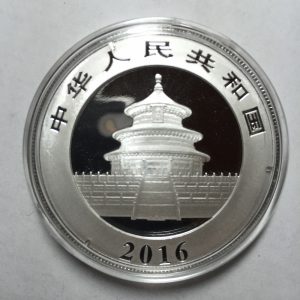
I sold my silver Pandas. I lost interest after the composition was changed but the hype has kept the prices up. Hype is not a long-term strategy.
Finally, I am still waiting to find a “W” quarter in change. I have yet to see one. Most of the people I know that are looking for these quarters are roll hunting. If I were into conspiracies, I would suggest that the Mint did this on purpose to increase the demand for quarters. People would demand rolls of quarters, forcing the Federal Reserve to order more.
Considering the U.S. Mint is a government agency, I bet they are storing most of the quarters in Area 51! After all, if we are going into conspiracy theories, we might as well go all of the way!
Sep 2, 2019 | commemorative, legislative
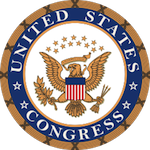 Like many here in Washington, Congress goes on vacation in August. They usually adjourn the last full week in July and return right after Labor Day. The August vacation has been an ongoing fact of Congress since the 1950s.
Like many here in Washington, Congress goes on vacation in August. They usually adjourn the last full week in July and return right after Labor Day. The August vacation has been an ongoing fact of Congress since the 1950s.
Like the rest of our lives, Congress has found ways of replacing paper-based processes with an online equivalent. One of those areas is when a member wants to submit a bill. Rather than typing it on paper and dropping it into a physical hopper, the member creates an electronic version of the bill and submits it to the clerk of their respective chambers.
In August, Sen. Catherine Cortez Masto (D-NV) did that by submitting the Women’s History and Nineteenth Amendment Centennial Quarter Dollar Coin Program Act (S.2427). If passed, the bill will success the America the Beautiful Quarter Dollar Program to honor historical women on U.S. quarters.
S. 2427: Women’s History and Nineteenth Amendment Centennial Quarter Dollar Coin Program Act
Read twice and referred to the Committee on Banking, Housing, and Urban Affairs. — Aug 1, 2019
In July, the Senate passed the Christa McAuliffe Commemorative Coin Act (S.239), and in June, they passed the Women’s Suffrage Centennial Commemorative Coin Act (S.1235). Both bills remain held at the desk in the House of Representative because of an objection.
Previously, a source said that a freshman member of the House made the objection based on constitutional grounds. Another source claims the constitutional argument is being used to mask other political reasons. The source said that if the Senate wants to block bills passed by the House, then the House was going to do the same to the Senate.
In other words, tantrums on both sides of the Capital continues to cause gridlock on the most mundane legislation. Your government at work.
Sep 1, 2019 | commentary, exonumia, news
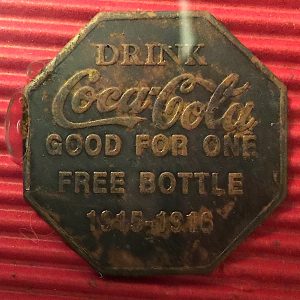
Token for a free bottle of Coca-Cola in 1915-16
Gregory Martin wrote to the editor for KendallCountyNOW.com that he would ” like to bring to mind the concept of starting your young ones on starting a coin collection.”
In three of the four paragraphs, Martin shows his passion for both collecting and how it relates to history. He mentions the 3-cent nickel and the 1943 steel cents as gateways into understanding what was happening in our country’s history.
Martin may have touched on something that today’s teachers can use to explain history. For example, the story of westward expansion was more about economics than exploration. People left the east for better opportunities, to find gold, discover silver, or for 40 acres and a mule. These stories can be taught using the money of the times.
As collectors, we know about fractional currency, postage stamp money, and why arrows periodically appear on minor coinage of the time. However, using these tangible items as props, a teacher can explain the history and show the results by using the money of the time.
Every coin, currency, and token is a reflection of the times when and where produced. A teacher can use the history of the San Francisco Mint to teach about the Gold Rush and the Great Earthquake of 1906.
The New Orleans Mint had its place in the Civil War.
The Carson City Mint is as much a story about the old west as it is about the economic battles, including the Crime of ’73.
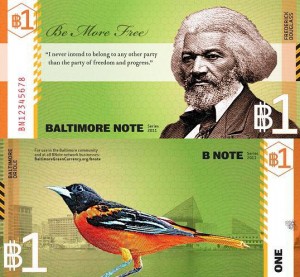
One Dollar Baltimore B-Note featuring Frederick Douglas and a Baltimore oriole.
Using numismatics to learn about history goes beyond the United States’ borders. After becoming interested in Canadian coins, I learned more about the British monarchy and the decline of the monarch’s power by studying the transitions from Queen Victoria to Queen Elizabeth II.
After finding three banknotes from the State of Chihuahua, I learned more about the Mexican Revolution after trying to understand why currency for a three-year state existed.
Maybe it is time to take the saying “history in your hand” and turn it into something tangible. After all, a handful of trade and sales tax tokens may have more of an impact than just reading about the Great Depression.
And now the news…

August 18, 2019
A Utah businessman paid $1.32 million for a dime last week at a Chicago coin auction. It wasn't just any 10-cent piece; the 1894-S Barber Dime is one of only 24 that were ever made, according to Stack's Bowers Galleries, which held the auction Thursday night.  → Read more at cnn.com
→ Read more at cnn.com

August 24, 2019
TREASURE-hunters have dug up a hoard of ancient silver coins dating back to the Battle of Hastings in 1066 – worth an impressive £5million. A metal-detecting couple made the lucky find while searching an unploughed field on a farm in north-east Somerset.  → Read more at thesun.co.uk
→ Read more at thesun.co.uk

August 24, 2019
Such a hobby does not take a lot to start and can be rewarding in so many ways. To start with you learn about money and in it's many denominations, including the Civil War 3 cent nickel! In American collecting you can observe the way our country grew and developed, gaining a perspective on people and actions of this great nation.  → Read more at kendallcountynow.com
→ Read more at kendallcountynow.com

August 24, 2019
For the first time in almost half a century the Treasury has ordered the Royal Mint to stop producing any 1p or 2p coins. The crackdown on coppers comes at a time when all our cash is under threat – with banks preferring that we pay for goods online or with cards because it saves them money.  → Read more at thisismoney.co.uk
→ Read more at thisismoney.co.uk
 → Read more at wtvy.com
→ Read more at wtvy.com → Read more at thesouthafrican.com
→ Read more at thesouthafrican.com → Read more at longisland.com
→ Read more at longisland.com → Read more at lincolnshirelive.co.uk
→ Read more at lincolnshirelive.co.uk → Read more at space.com
→ Read more at space.com → Read more at trentonian.com
→ Read more at trentonian.com → Read more at thesun.co.uk
→ Read more at thesun.co.uk → Read more at orlandosentinel.com
→ Read more at orlandosentinel.com → Read more at jamaica-gleaner.com
→ Read more at jamaica-gleaner.com





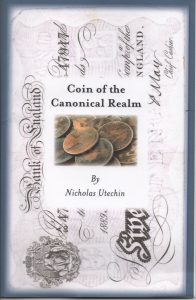
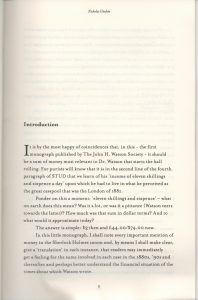
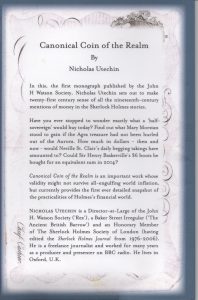


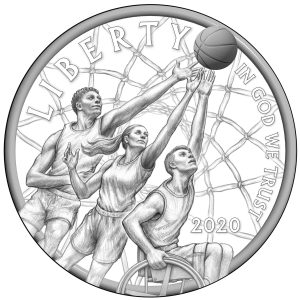




 Like many here in Washington, Congress goes on vacation in August. They usually adjourn the last full week in July and return right after Labor Day. The August vacation has been an ongoing fact of Congress since the 1950s.
Like many here in Washington, Congress goes on vacation in August. They usually adjourn the last full week in July and return right after Labor Day. The August vacation has been an ongoing fact of Congress since the 1950s.

